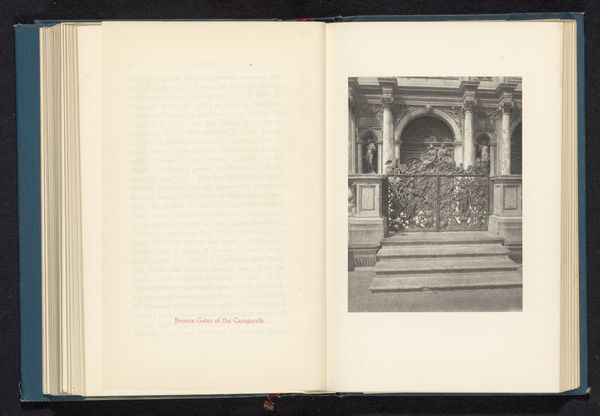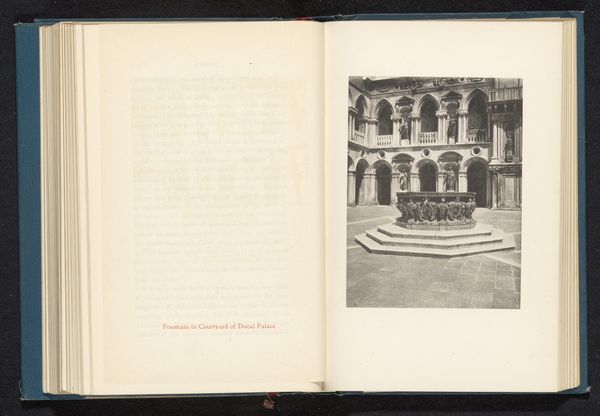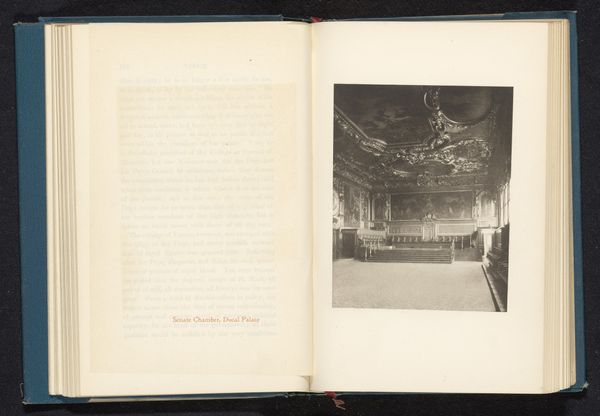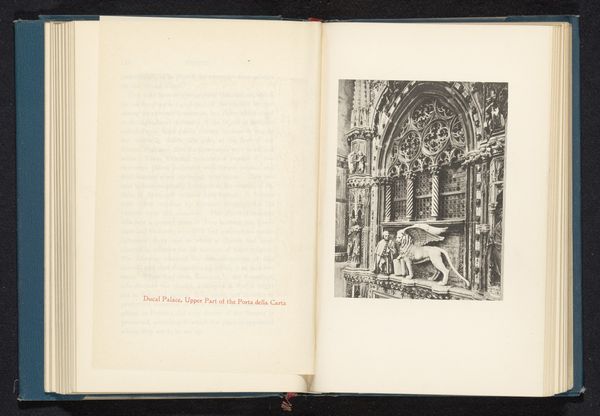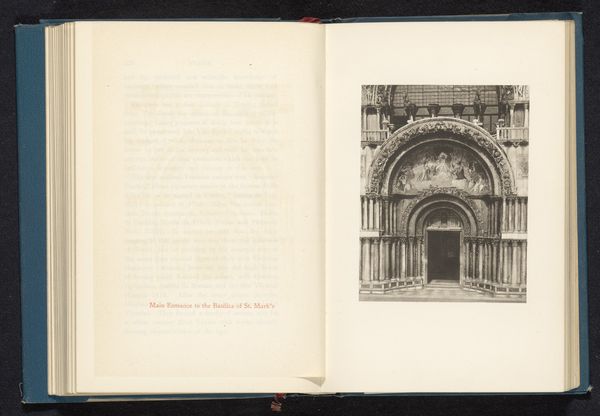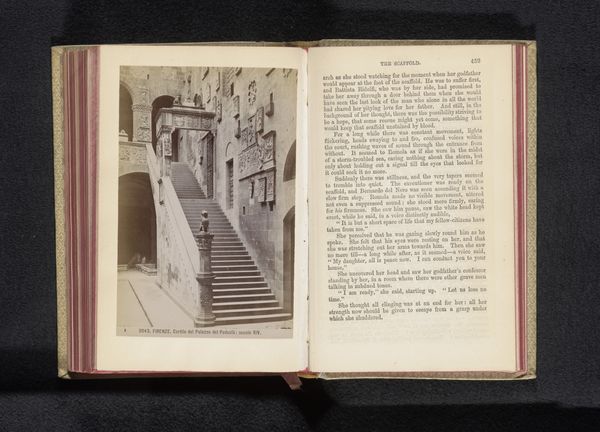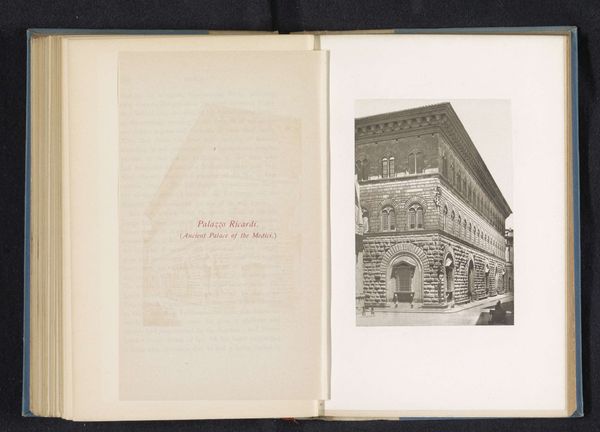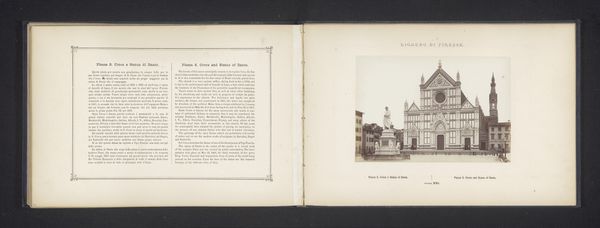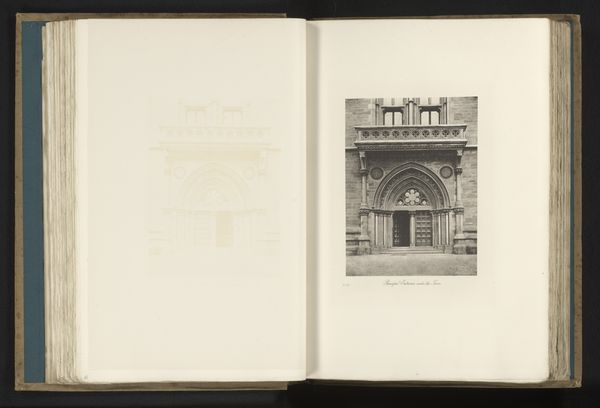
Dimensions: height 118 mm, width 91 mm
Copyright: Rijks Museum: Open Domain
Editor: So, here we have an image, "Scala dei Giganti van het Dogepaleis te Venetië", which dates to sometime between 1882 and 1892. It seems to be a print taken from a photograph. What strikes me is the monumental architecture—it makes you feel tiny. What's your take on this? Curator: What's immediately interesting is thinking about the social function of a staircase like this. The Scala dei Giganti wasn't just a functional element; it was a stage for power. Consider who was meant to ascend those stairs and what messages that journey communicated. Editor: So it’s more than just getting from point A to point B. It's performative. Curator: Exactly. It was the formal entrance for important state ceremonies. Think about the Doge, the embodiment of Venetian power, processing up these steps. It reinforced hierarchy, visually and physically. How do you think photography, a relatively new medium at the time, played into this? Editor: Well, the photograph flattens the space, but it also makes it more accessible, maybe even democratic. It allows people who could never access that space to view it, even possess it as an image. Curator: Precisely! It democratizes access while still preserving the aura of authority. The act of photographing a place like this contributes to its ongoing cultural importance. It asks: What’s lost and what’s gained by reproducing such a powerful place? Editor: I never thought about the politics of photographing architecture. Curator: It's about controlling and disseminating the narrative, a vital aspect of art history, don’t you agree? Editor: Absolutely! I am excited to keep this idea in mind from now on.
Comments
No comments
Be the first to comment and join the conversation on the ultimate creative platform.
